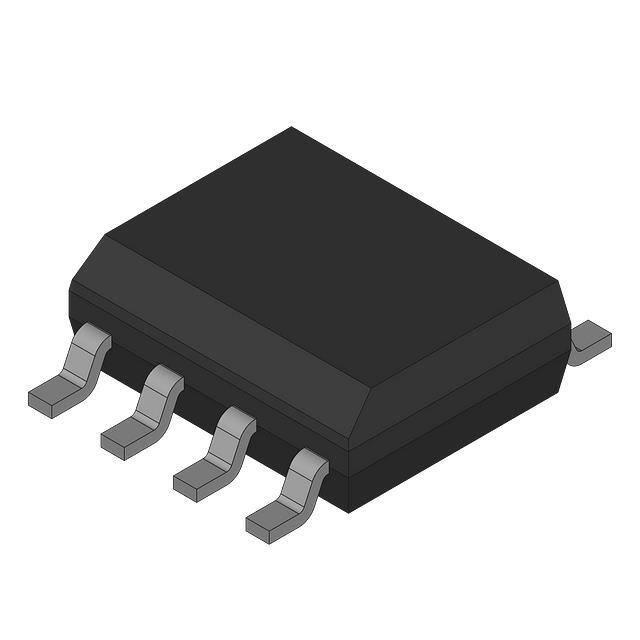ST MEMS adapter board based on STM32F401VE and compatible with all ST MEMS adapters
STEVAL-MKI109V3 is a professional MEMS tool provided by STMicroelectronics. It is a ready-to-use MEMS board development platform with the following application scenarios and market advantages:
Application scenario description:
1.Sensor evaluation and development: STEVAL-MKI109V3 can easily monitor the behavior of ST MEMS sensors, accelerate time to market and improve the performance of new product designs. It is compatible with ST MEMS adapter boards and supports I2C and SPI data modes to achieve high output data rates.
2.Industrial applications: The STM32F401VE ARM Cortex-M4 microcontroller (with DSP and FPU) can process complex data sets from STMicroelectronics' advanced 6-axis inertial module, suitable for evaluating the latest generation of high-resolution MEMS sensors for industrial applications.
3.Wearable products: For example, in wireless headphones, its low-power 3D acceleration sensor is used to implement functions such as user posture detection, headset single and double tap functions, and entry/exit low-power mode.
4.Data monitoring and analysis: Users can run a graphical user interface (GUI) on the host PC to manage the data stream from the MEMS sensor and analyze the MEMS sensor waveform to optimize the sensor performance and accuracy in the application.
Market Advantages:
1.High-performance microcontroller: Equipped with STM32F401VE microcontroller, it can process sensor readings and handle complex data sets from advanced 6-axis inertial modules.
2.Flexible power management: Flexible power management is achieved through software-adjustable power circuits, allowing users to set the sensor power supply voltage in the range of 0 to 3.6 V and replicate the operating conditions in the expected application.
3.Accurate power monitoring: Supports accurate power monitoring of sensor power supply voltage and current without any external instruments.
4.Plug and Play: Compatible with all ST MEMS sensors, a complete software package is provided to support all MEMS evaluation boards, facilitating rapid development for engineers.
5.Visual interface configuration: supports Linux/Mac OS X/Windows system development, providing convenient sensor settings, register configuration, data logging and drawing functions.
6.Ultra-low power consumption: 50na in power-off mode and less than 1µA in active low-power mode, which is very suitable for battery-powered applications.
7.Multiple operating modes and bandwidths: provides multiple operating modes and bandwidth options to meet different application requirements.
8.High-speed digital output interface: provides high-speed I²C/SPI digital output interface to meet high-speed data transmission requirements.
In summary, STEVAL-MKI109V3 has significant market advantages in the field of MEMS sensor evaluation and development with its high-performance microcontroller, flexible power management, precise power monitoring, plug-and-play compatibility, visual interface configuration and ultra-low power consumption.
Scene application
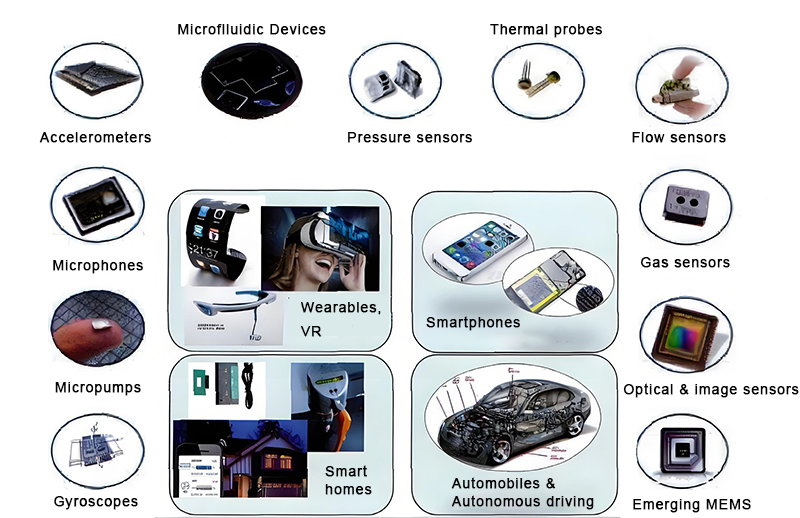
Display board photo
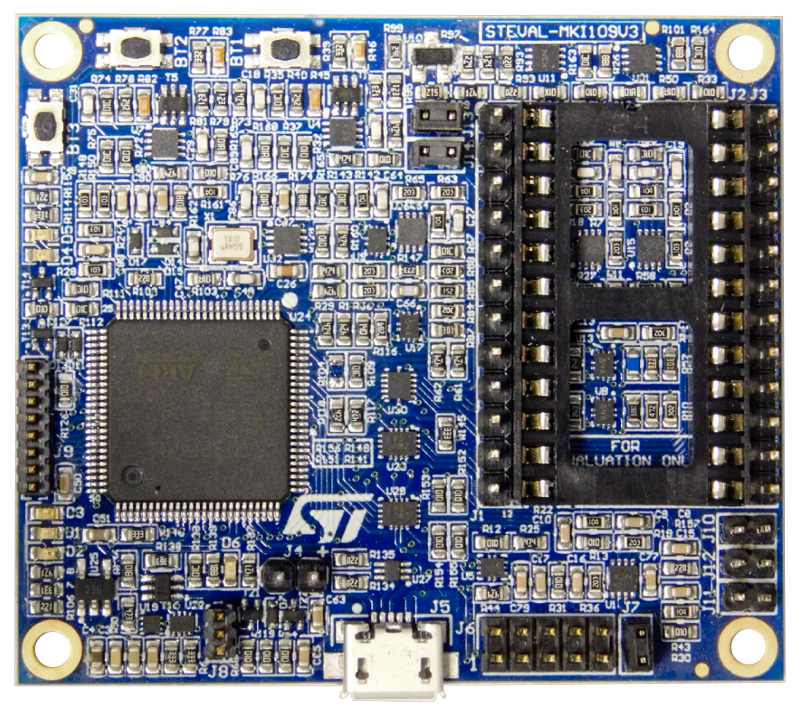
Solution block diagram
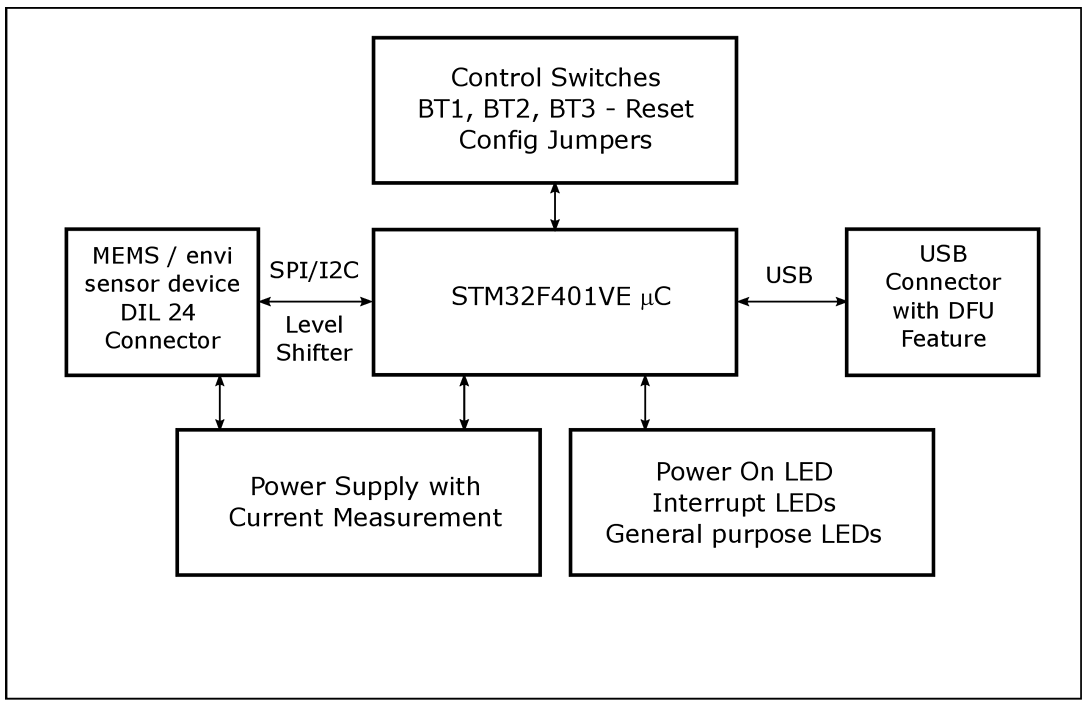
Product function diagram 1
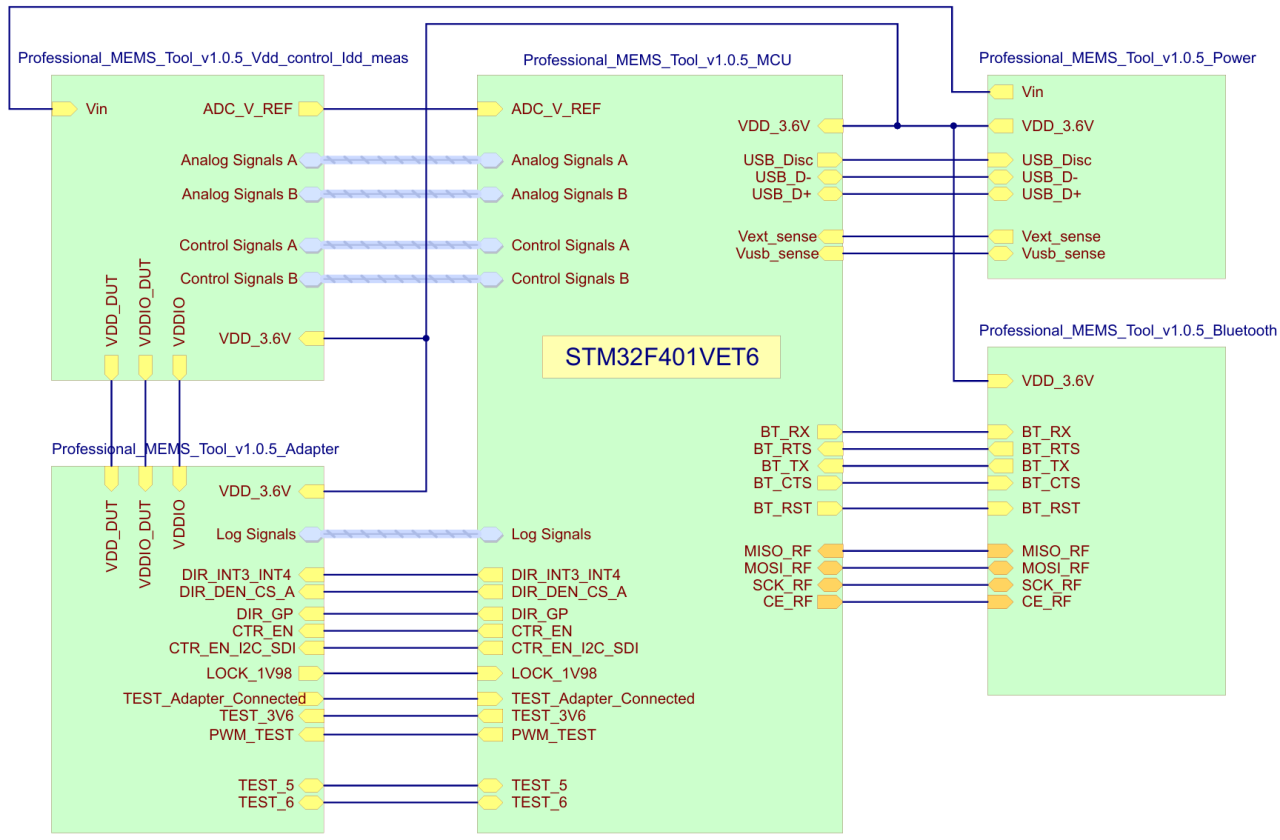
Product function diagram 2
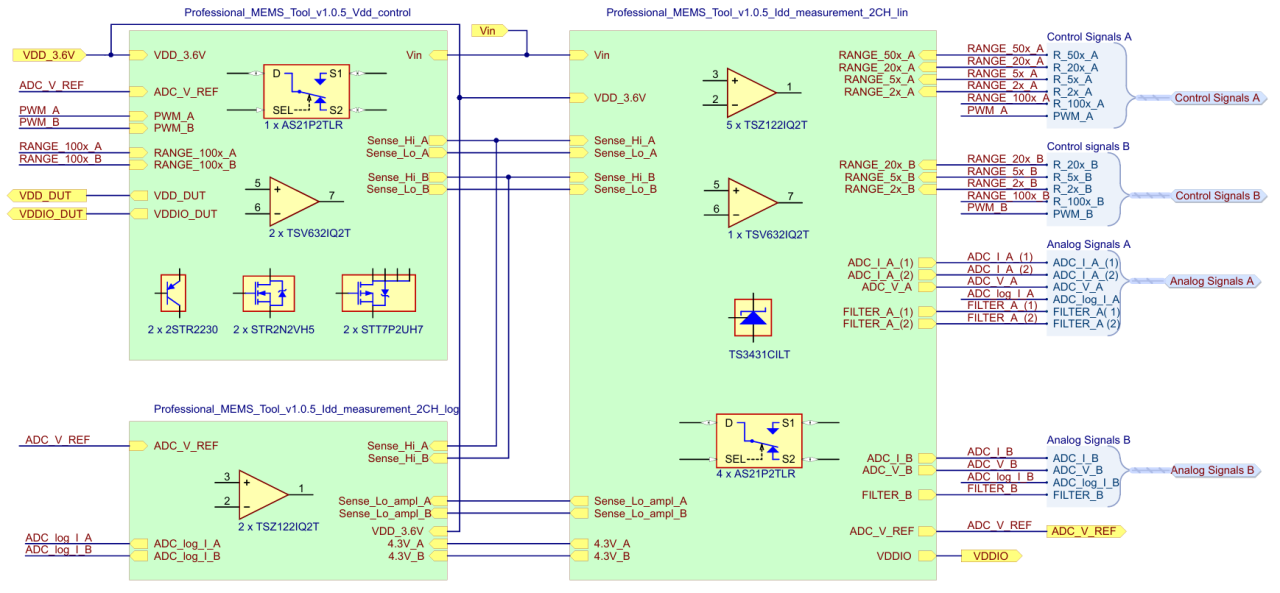
Core technology advantages
• High-performance microcontroller: STEVAL-MKI109V3 adopts STM32F401VE high-performance microcontroller. This ARM Cortex-M4 microcontroller with DSP and FPU can process complex data sets, such as optical or electronic image stabilization (OIS and EIS) data from ST's advanced 6-axis inertial modules.
• Professional MEMS tools: As a ready-to-use MEMS motherboard development platform, it allows engineers to easily monitor the behavior of ST MEMS sensors, thereby shortening time to market and significantly improving the performance of new product designs.
• Flexible power management: The development board features a software-adjustable power circuit that allows users to set the sensor power supply voltage in the range of 0 to 3.6V and replicate the operating conditions in the expected application.
• Accurate power monitoring: The board supports accurate monitoring of the sensor power supply voltage and current without any external instruments.
• Wide compatibility: Compatible with ST MEMS adapter boards and supports I2C and SPI data modes to achieve extremely high output data rates.
• Visual interface configuration: Supports Linux/Mac OS X/Windows system development, provides convenient sensor setup, register configuration, data logging and drawing, and can guide engineers to develop faster.
• Ultra-low power consumption: 50na in power-down mode and less than 1µA in active low-power mode.
• High precision and reliability: STMicroelectronics' ThELMA technology is capable of creating tiny mechanical structures, and combined with solid packaging experience in building high vacuum cavities and controlling the hermetic sealing of mechanical structures, it ensures high reliability and excellent performance.
• Integration: The core advantages of MEMS technology lie in its miniaturization, integration and high efficiency. The miniaturized design gives it significant advantages in space, power consumption and performance; integration allows multiple functions to be integrated on one chip, improving the reliability and stability of the system.
• High-quality production: The high-precision batch manufacturing capability of MEMS technology makes it possible to manufacture millions of micro-motor devices or complete MEMS systems on a single silicon wafer at the same time.
In summary, the core technical advantages of STEVAL-MKI109V3 lie in its high-performance processing capability, flexible power management, precise monitoring, wide compatibility, visual interface configuration, ultra-low power operation, high accuracy and reliability, integration, and high-precision batch manufacturing capabilities. These features make STEVAL-MKI109V3 an ideal tool for MEMS sensor evaluation and development.
Solution Specifications
• Microcontroller: Equipped with a high-performance STM32F401VE microcontroller based on the ARM Cortex-M4 core with DSP and FPU.
• Power Management: With software-adjustable power circuitry, it allows users to set the sensor power supply voltage in the range of 0 to 3.6V and replicate the operating conditions in the expected application.
• Power monitoring: Enables accurate monitoring of sensor supply voltage and current without external instruments.
• Data interface: Supports I2C and SPI data modes for high output data rates.
• Compatibility: Compatible with ST MEMS adapter boards for use with ST MEMS sensors.
• Graphical user interface: A graphical user interface (GUI) such as Unico GUI can be run on a host PC to manage data streams from MEMS sensors and analyze MEMS sensor waveforms.
• Data processing capabilities: The STM32F401VE microcontroller can process not only sensor readings but also complex data sets such as barometric pressure and accelerometer or gyroscope data, making it suitable for evaluating the latest generation of high-resolution MEMS sensors for industrial applications.
• Supporting software: MEMS-Studio software solution, supporting embedded AI function development, embedded library evaluation, data analysis, and design of no-code algorithms for the entire MEMS sensor product portfolio.
• OS compatibility: Supports Windows, macOS, and Linux operating systems.
• Network update: Provides network update function with automatic notification of new versions.
These specifications make the STEVAL-MKI109V3 a full-featured, highly integrated development platform for evaluating and developing products based on ST MEMS sensors.

